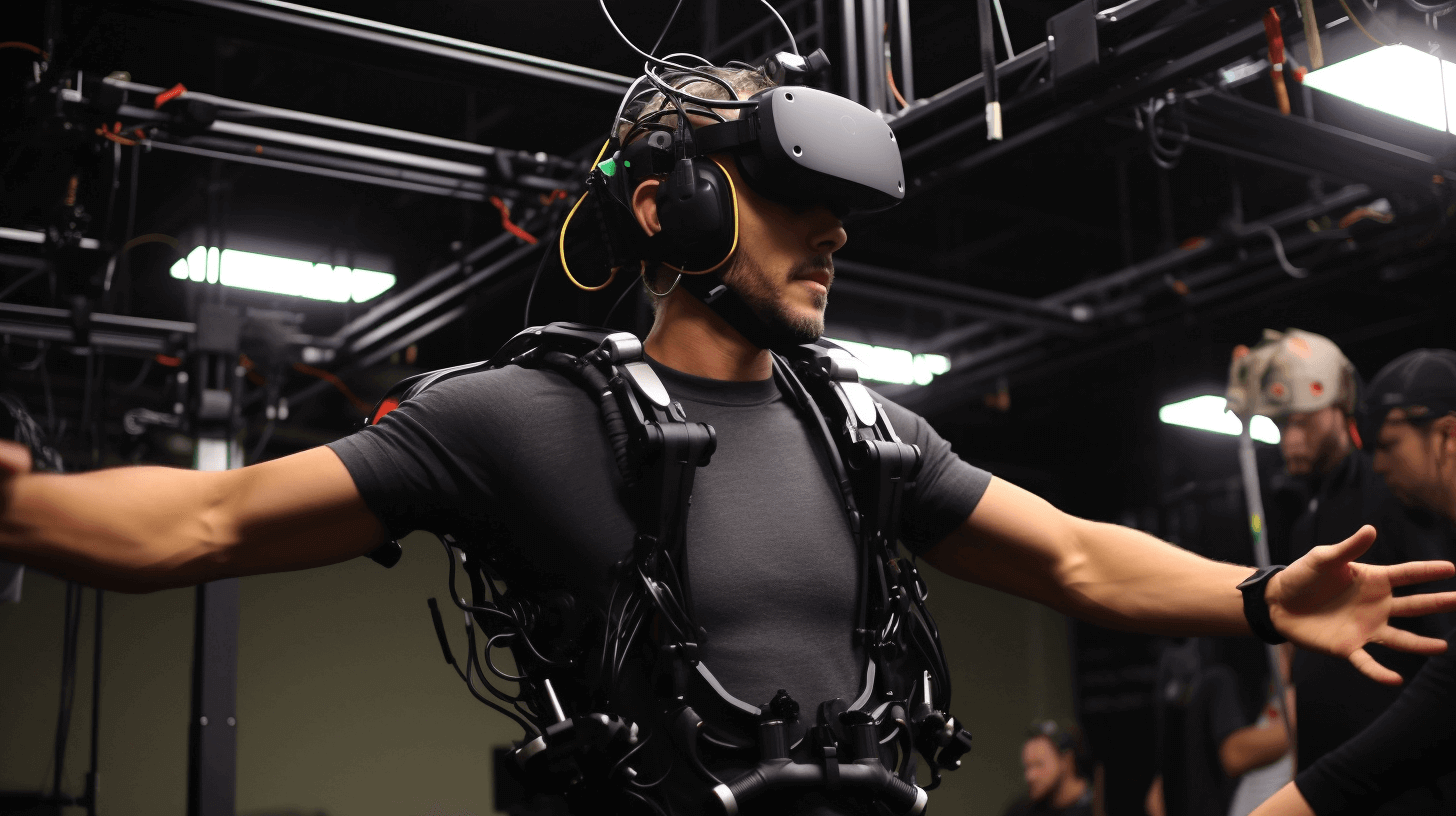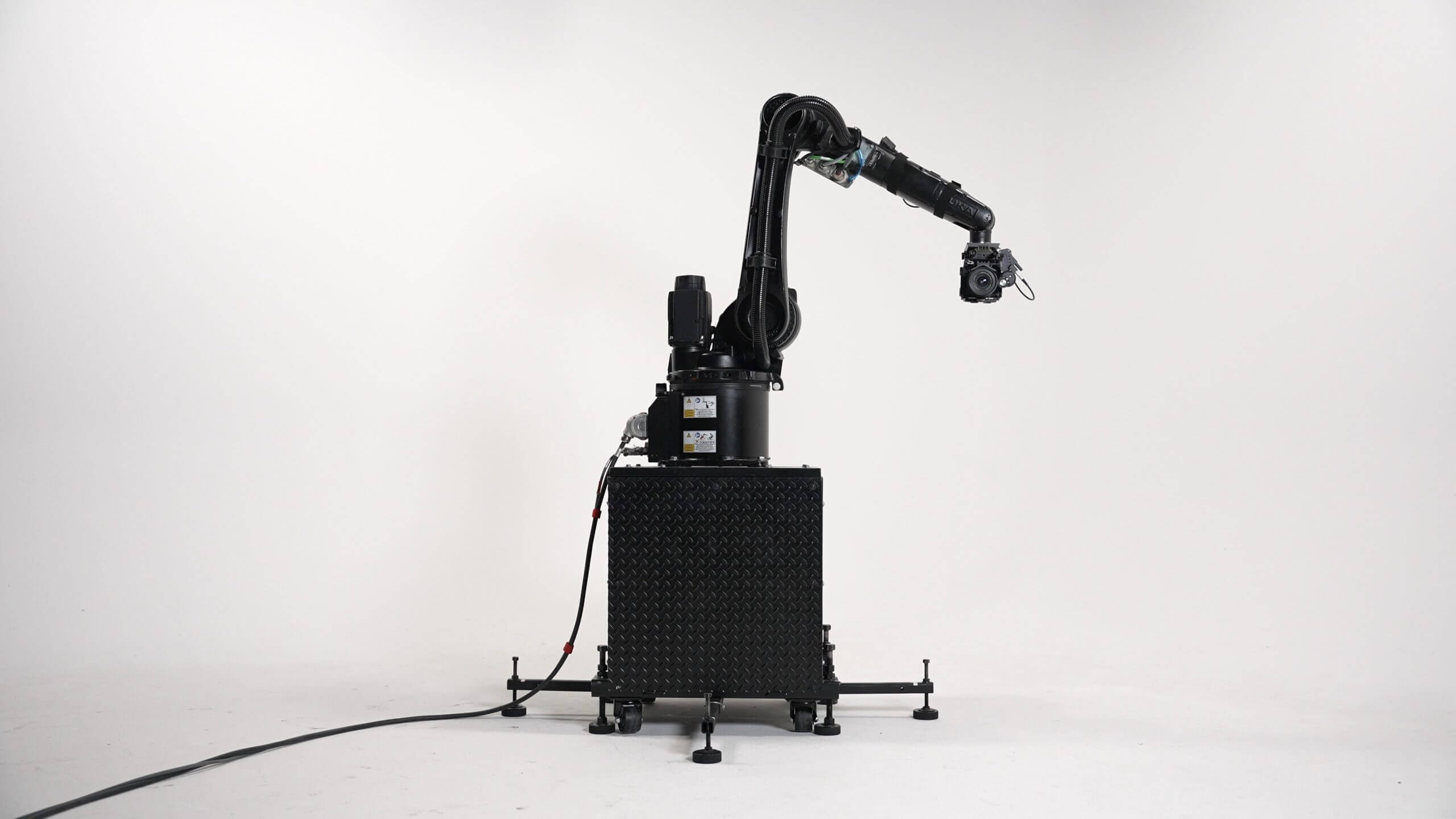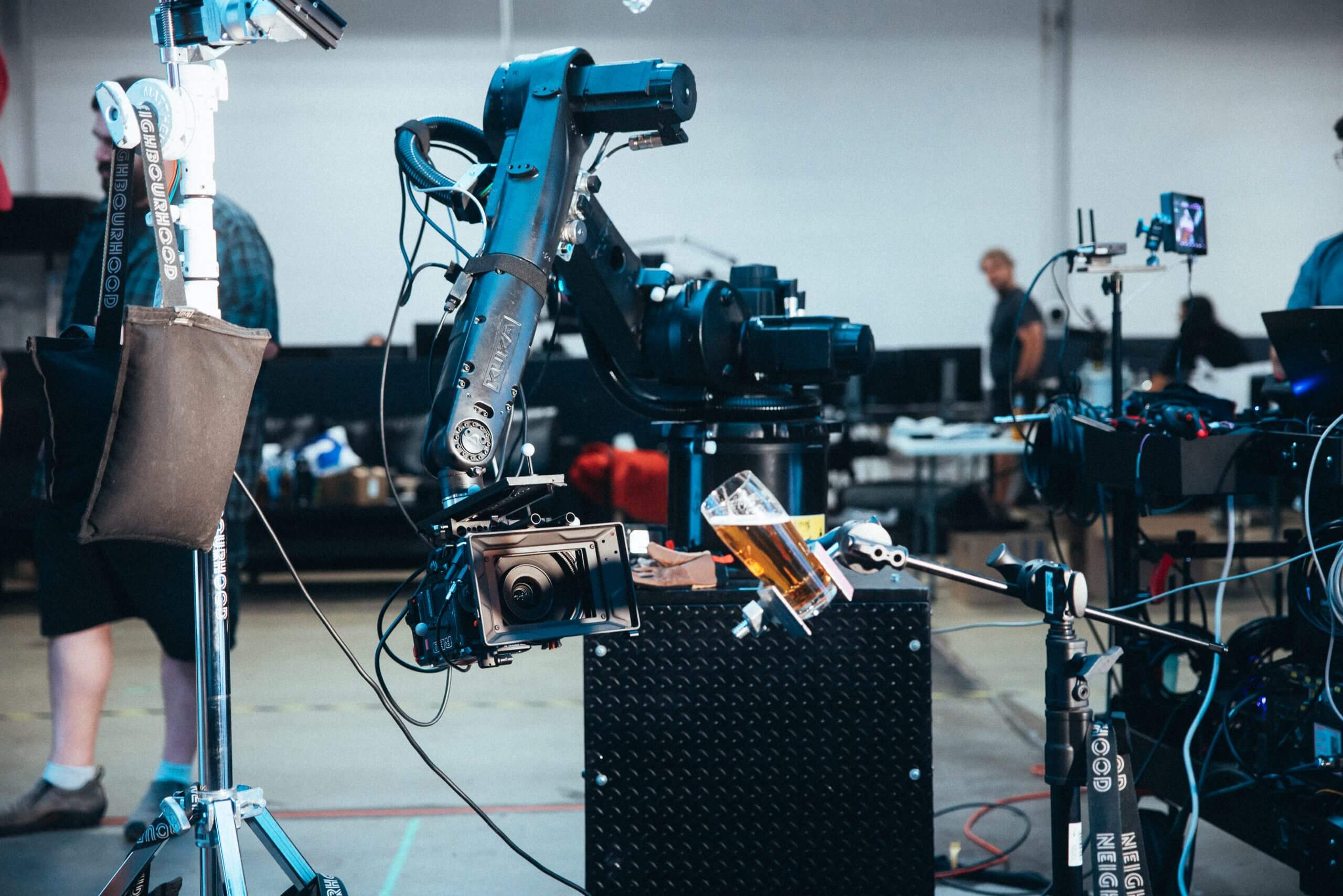
The Role of Motion Control Technology in Modern Film and Television Production
- marsmoco
- February 16, 2023
- 11:44 am
Motion control technology has revolutionized film and television production, enabling precise camera movement and advanced visual effects. Learn about the various applications of motion control technology and its role in high end tv drama and feature films production.
Motion Control Technology: The Key to Efficient Filmmaking
Motion control technology is an invaluable tool that has become increasingly important in modern film and television production. Motion control is a specialized form of automation that allows for precise, repeatable control over components like cameras, lights, and digital effects.
With this digital technology, filmmakers have the ability to capture intricate shots without having to manually manipulate each element. Plus, they can create stylized visuals that would be difficult or even impossible with other methods—all while getting more bang for their buck! Besides saving them time and money on productions costs, this type of automation also allows directors to benefit from streamlined workflows throughout production.
How to Achieve Complex Action Sequences with Motion Control
The concept of motion control technology relies on the use of robotics or computer-controlled mechanisms to manipulate elements such as cameras, lighting rigs, and special effects in order to achieve precise and repeatable camera movements within a shot. In this way, directors can create shots that take advantage of the camera’s full range of motion while staying true to the storyboard or vision for the same scene—all with minimal effort from the crew.
This type of automation also enables filmmakers to capture complex action sequences with precise choreography across multiple takes without having to manually reset each element between takes. This greatly streamlines the process and reduces both cost and time spent in production.
Save Time and Money with Motion Control's "Impossible "Camera Movements
The benefits of using motion control technology in production are numerous: it brings precision, consistency, speed and efficiency into filmmaking processes while allowing creative freedom in terms of shot composition and camera movement; it helps filmmakers save money by reducing crew size; it enables intricate action sequences that would be difficult or impossible to achieve without automation; it decreases setup time on set; it often decreases costs associated with post-production VFX; it improves safety on set as there is less need for dolly grips or gaffers working around live equipment; lastly, motion control techniques can add an extra layer of creativity by enabling stylized movement which might otherwise be too expensive or cumbersome to execute manually.
The Basics of Motion Control Technology
Motion control technology is a type of automation that utilizes computers and robotics systems for the purpose of controlling or adjusting the speed, direction, or position of an object. The components of this new technology typically involve a feedback loop system, actuator(s), motor controllers, sensors, and power amplifiers that are interconnected by data communication networks such as Ethernet.
The History of Motion Control in Film and Television
In film history, motion control technology has been around since the early 1950’s. It was first used in Hollywood to create visual effects such as stop motion animation and special camera movements.
Later on, during the 1970’s and 80’s, computer-controlled motors were developed which enabled filmmakers to create complex camera movements that could be precisely controlled with a single operator instead of multiple crew members. This was revolutionary because it allowed directors to create shots that would have otherwise been impossible using traditional methods.
How Multi-Channel Digital Controllers are Changing Filmmaking
There have been many advancements in film technology over the years. For example, multi-channel digital controllers now allow filmmakers to control multiple axis at once while also offering greater accuracy than ever before.
Additionally, robotic arms like Kuka Robots offer higher precision camera movements that can be programmed with ease for one-off effects or repetitive tasks such as tracking shots with smooth transitions between each camera movements.
Furthermore, 360 degree rigs have become increasingly popular in recent years for creating immersive VR experiences by combining multiple cameras into one rig for simultaneous capture from different angles.
Finally, advances in artificial intelligence have enabled automated systems to interpret cues from the environment and make adjustments accordingly – for example “smart” cameras that can recognize faces or objects and track them throughout a scene without interruption. All of these developments have made motion control technology increasingly easier and more accessible to filmmakers today than ever before.
Applications of Motion Control Technology
In modern film and television production, motion control technology is used to help create more dynamic and visually stunning shots. Motion control systems allow a camera operator or director to precisely control the camera’s movements and speeds, creating smooth and precise shots that would otherwise be difficult or impossible to achieve.
Camera operators can also use film technology to easily execute complex camera movement like panning, tilting, tracking, zooming and rotating. With motion control tech, filmmakers can also make use of macro images that capture extremely small details that may normally be lost in regular filming.
Visual Effects
Motion control technology also plays an important role in creating visual effects. It can be used to manipulate objects within a shot, replicate or composite elements of different scenes together, or even create entire virtual worlds. Motion control systems allow for filmmakers to better refine their creative vision without having to worry about the physical limitations of the environment they’re shooting in. This type of filmmaking technology has become increasingly popular among filmmakers due to its cost-effectiveness and ability to quickly produce stunning results on tight schedules.
Storytelling
When it comes to motion control technology allows filmmakers a greater degree of freedom with their storytelling by providing them with more options for how they want the story to move forward.
For example, instead of having characters stand around talking all the time, directors can now move their cameras around the scene in order to provide additional context for viewers as well as add additional layers of emotion into a scene. This type of direction can help keep audiences engaged while still allowing for meaningful conversations between characters and plot points throughout the story arc.
How Motion Control Is Used In Filmmaking
Motion control has been used in film industry, in popular films such as:
- The Lord of The Rings trilogy (2001-2003), where various camera movement were achieved using motion control rigs;
- Avatar (2009) which included highly complex aerial motion;
- The Matrix (1999), featuring bullet time effects made possible by motion controls;
- Inception (2010) which utilized multi-layered compositing techniques enabled by this filmmaking technology;
- Blade Runner 2049 (2017), which featured an array of extremely complex robotic shots realized with motion controllers.
On television shows like Game Of Thrones (HBO 2011-2019) and Westworld (HBO 2016-present) have used this type of tech extensively in order to achieve intricate visual effects sequences while staying faithful towards the source material each series is based upon.
Choosing the Right Motion Control Technology
When choosing the right motion control technology for a production, there are several factors to consider. Payload is one of the most important considerations, as it will determine how much weight and force the device can handle. The reach of the motion control system is also critical, as it will determine how far it can move objects or how large an area it can cover. Finally, synchronization should be taken into account, as this will ensure that multiple devices work together in harmony without miscommunication or interference.
Factors to Consider
In addition to these key components, other factors such as accuracy, speed, reliability, safety features and cost should all be taken into account when selecting a motion control technology. It is important to ensure that the system offers enough precision for the production’s requirements and that it has enough power to move whatever needs to be moved quickly and efficiently.
Additionally, since safety is paramount in these systems, any required safety features must be included in the selection process. Lastly, cost must always be taken into consideration as well; although high-end models may offer more features and performance capabilities than cheaper options, they may still not provide value for money if they are more expensive than necessary.
The Usage of Motion Control Technology in Post Production
Once the ideal motion control technology is selected for a production environment, it must then be effectively implemented in order to maximize its potential benefits. To start with, operators should ensure that all components are operating properly before putting them into use.
This includes double-checking for any faults or malfunctions that could put personnel at risk or affect the performance of the system negatively. Furthermore, all settings should be adjusted according to the specific requirements of each task before beginning work – if necessary – in order to increase efficiency and accuracy.
Regular maintenance should also be carried out on both hardware and software components so that any issues can be spotted early on before they have time to develop into major problems which could cause further delays or disruption down the line.
Finally, if multiple units are being used together in syncronization mode then regular calibration sessions should take place each month to ensure that all devices remain perfectly tuned with one another at all times.
Future of Motion Control Technology
The future of motion control technology in film and television production is one that will continue to be shaped, refined, and improved upon. With the emergence of new technologies such as virtual production and AI, filmmakers now have access to a wide range of tools that can help them create incredibly detailed and visually stunning scenes with unprecedented accuracy.
Motion control technology is at the forefront of this revolution, allowing for accurate handheld camera movement and precise control over how objects move on screen. As more advancements are made in this field, motion control technology will continue to evolve and become an integral part of the filmmaking process.
Virtual Production and AI
One way in which motion control technology is evolving is through virtual production. Virtual production allows filmmakers to visualize their scenes before they shoot by creating a 3D environment in software like Unreal Engine or Unity3D that accurately reflects their set design.
This enables them to experiment with different shots or angles until they’ve achieved exactly what they’re looking for, all without having to build a physical set. Additionally, filmmakers can use motion capture data from actors or props to add realism to their scenes and drive automated camera movements for more efficient filming.
Another area where motion control technology is beginning to make its mark is artificial intelligence (AI). AI-driven systems enable filmmakers to quickly generate complex camera motions from basic instructions, saving them time and effort during production.
For example, using computer vision algorithms and deep learning models, filmmakers can train their system so it automatically tracks faces or objects within a scene as they move around – something that was once impossible without manual intervention.
Furthermore, algorithms can also be used for facial recognition tasks such as identifying characters or creating crowd simulations by automatically generating large numbers of digital clones with realistic behavior.
Summary
Motion control technology is playing an increasingly important role in modern film and television production. By combining virtual production, artificial intelligence, and advanced motion control systems, filmmakers are able to create complex and realistic scenes with greater accuracy and efficiency.
Motion control technology can be used to automate camera movement and generate complex camera motions from basic instructions. It also enables filmmakers to experiment with different shots or angles until they’ve achieved exactly what they’re looking for. Additionally, it allows for accurate tracking of faces or objects within a scene as well as facial recognition tasks. As motion control technology continues to evolve, it will become an essential part of the filmmaking process and enable filmmakers to create stunning visuals that were once impossible.
*Recent Posts


Motion Control Camera for Film and Television Production | Marsmoco
The Benefits of Using a Motion Control Camera System for Product Videography
